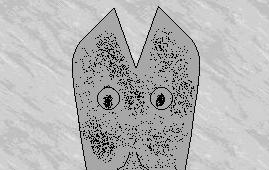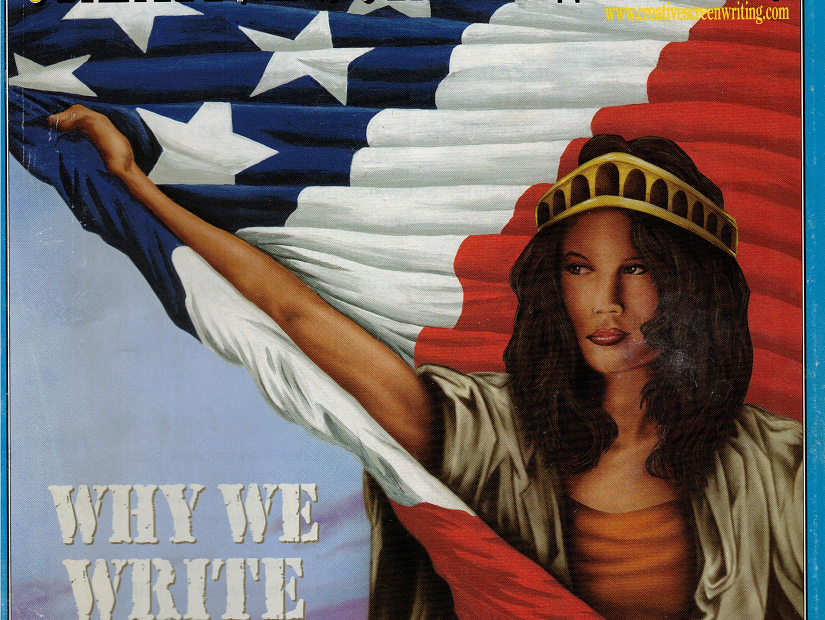Aladdin. Directed by John Musker and Ron Clemens. Written by Ted Elliot and Terry Rosio. Los Angeles: The Walt Disney Corporation, 1992.
All That Jazz. Directed by Bob Fosse. 1979.
Alberts, Randy. “Aladdin: A Work in Progress.” InterActivity, V1 N2, May/June, 1995.
Amazing Stories. Produced by Steven Spielberg. 1985-1987.
Aristotle. Poetics. Translated by Richard Janko. Indianapolis, Indiana: Hackett Publishing, 1987.
Arnold, Julian. “Rec.arts.int-fiction Frequently-Asked Questions.” Ftp://ftp.gmd.de/if-archive/rec.arts.int-fiction/FAQ, December 4, 1995.
Atchley, John S. “Cas, Chapter One.” http:rampage.onramp.net/~jatchley/isfp_1.html, 1995.
________. “Interactive Science Fiction Project.” Http:rampage.onramp.net/~jatchley/scifin.html, 1995.
________. “Interactive Science Fiction Project: Writer’s Guidelines.” Http:rampage.onramp.net/~jatchley/scifin.html, 1995.
Barker, Philip. Exploring Hypermedia. London, England: Kogan Page, 1993.
Barthes, Roland. S/Z. Translated by Richard Miller. New York: Hill and Wang, 1974.
Bates, Joseph. “Computational Drama in Oz.” Art Com, ftp://ftp.gmd.de/if-archive/programming/general-discussion/ArtCom.44, V10 I10 N44, december, 1990.
Brecht, Bertolt. The Threepenny Opera. Translated by Ralph Manheim and John Willett. Reading, England: Cox & Wyman, 1979.
Bronfeld, Stewart. Writing for Film and Television. New York: Simon & Schuster, 1981.
Burnett, Kathleen. “Toward a Theory of Hypertextual Design.” Postmodern Culture, V3 N2, January, 1993.
Bush, Vannevar Bush. “As We May Think.” Http://www.isg.sfu.ca/~duchier/misc/vbush.
Catch-22. Directed by Mike Nichols. Written by Buck Henry. Los Angeles: Paramount Pictures, 1970.
Cochran, Connor Freff. “Interactive Storytelling: A Critical Look at an Evolving Art, Part One.” InterActivity, V1 N5, November/December, 1995.
Cook, David A. A History of Narrative Film. New York: W. W. Norton, 1981.
Crevier, Daniel. AI: The Tumultuous History of the Search for Artificial Intelligence. New York: HarperCollins, 1993.
Dr. Strangelove. Directed by Stanley Kubrick. Written by Kubrick, Terry Southern and Peter George. Los Angeles: Columbia Pictures, 1964.
Ebert, Roger. Siskel and Ebert. NBC: 8 January 1996.
Eisenstein, Sergei. Film Form. Translated by Jay Leyda. San Diego: Harcourt Brace Jovanovich, 1949.
Field, Syd. Screenplay: The Foundations of Screenwriting. New York: Delacorte Press, 1982.
Foucault, Michel. The Archeology of Knowledge. Translated by A. M. Sheridan Smith. New York: Harper Colophon, 1976.
Foulger, Davis Albert. “Computers and Human Communication.” Clifford A. Pickover, ed. Visions of the Future. New York: St. Martin’s Press, 1992.
Freak Show. Created by The Residents. Ion, 1993.
Fritz The Cat. Directed by Ralph Bakshi. 1972.
Gasperini, Jim. “If Brecht Were Alive Today, Would He Be Designing Computer Games?, Part Three.” Art Com, ftp://ftp.gmd.de/if-archive/programming/general-discussion/ArtCom.44, V10 I10 N44, December, 1990.
Gelman, Robert. “Time’s Running Out on the Multimedia Dream.” InterActivity, V1 N3, July/August, 1995.
Gelman, Robert and Kenneth Melville. “On the Trail of the Interactive Grail.” InterActivity, V2 N1, January 1996.
Gingerbread Man. Created by The Residents. Ion, 1995.
Gone With the Wind. Written by Victor Fleming. Directed by David O. Selznik and Sidney Howard. Los Angeles: Metro-Goldwyn-Mayer, 1939.
Graves, David. “Life-like Characters in Interactive Fiction.” Art Com, ftp://ftp.gmd.de/if-archive/programming/ general-discussion/ArtCom.44, V10 I10 N44, December, 1990.
Hart, Anne. “A New Look: The Interactive Multimedia Market.” Creative Screenwriting, V1 N2, Summer, 1994.
Hiltz, Star Roxanne and Murray Turoff. Network Nation, The. Cambridge, Massachusetts: MIT Press, 1994.
I’m Your Man. Controlled Entropy, 1995.
Johnny Mnemonic. Directed by Robert Longo. Written by William Gibson. Toronto: Alliance Pictures, 1995.
Journeyman Project 2: Buried in Time, The. Directed by Michael Kripalani.
Jurassic Park. Directed by Steven Spielberg. Written by David Koepp, Michael Crichton and Malia Scotch Marmo. 1993.
Kelly, Kevin. Out of Control. Reading, Massachusetts: Addison-Wesley Publishing, 1994.
King’s Quest. Sierra, 1989.
Koelsch, Frank. The Infomedia Revolution. Toronto: McGraw-Hill Ryerson, 1995.
Kosko, Bart. Fuzzy Thinking: The New Science of Fuzzy Logic. New York: Hyperion, 1993.
Landow, George P. Hypertext: The Convergence of Contemporary Theory and Technology. Baltimore: The Johns Hopkins University Press, 1992.
Laurel, Brenda. Computers as Theatre. Reading, Massachusetts: Addison-Wesley, 1992.
Lawnmower Man. Directed by Brett Leonard. Written by leonard and Gimel Everett. los Angeles: New Line Cinema, 1992.
LOADSTAR: The Legend of Tully Bodine. Written by Ron Cobb. Rocket Science, 1995.
Malloy, Judy. “Electronic Storytelling in the 21st Century.” Clifford A. Pickover, ed. Visions of the Future. New York: St. Martin’s Press, 1992.
________. Its Name Was Penelope. Berkeley, California: Narrabase Press, 1990.
________. Uncle Roger. Self-published, 1988.
Marshak, Alexander. The Roots of Civilization. New York: McGraw-Hill, 1972.
Martinez, Ron. “Shape Shifter.” Wired, V3 N4, April, 1995.
Mehring, Margaret. The Screenplay: A Blend of Form and Content. Boston: Focal Press, 1990.
Milano, Dominic. “Case Study: The Journeyman Project 2: Buried In Time.” InterActivity, V1 N3, July/August, 1995.
________. “Case Study: The Making of Myst.” InterActivity, V1 N1, November/December, 1994.
________. “Inside Trilobyte.” InterActivity, V2 N2, February, 1996.
Minsky, Marvin. The Society of the Mind. New York: Simon and Schuster, 1986.
Morningstar, Chip and F. Randall Farmer. “The Lessons of Lucasfilm’s Habitat.” Michael Benedikt, ed. Cyberspace: First Steps. Cambridge, Massachussetts: The MIT Press, 1992.
Moulthrop, Stuart. “In the Zones: Hypertext and the Politics of Interpretation.” Http://www.ubalt.edu/www/ygcla/sam/essays/zones.html, February, 1989.
________. “Traveling in the Breakdown Lane.” Http://www.ubalt.edu/www/ygcla/sam/essays/breakdown.html.
Mountford, Joy. “Essential Interface Design.” InterActivity, V1 N2, May/June, 1995.
Multimedia Demystified. New York: Random House/NewMedia, 1994.
Myst. Broderbund, 1993.
Nayman, Ira. “The Virtual Space.” Cryptych, V1 N6, 1994.
Nelson, Theodore. Literary Machines, ed. 93.1. Sausalito, California: Mindful Press, 1992.
Pam, Andrew. “Xanadu World Publishing Repository of Frequently Asked Questions,” V 1.44. Http://www.cris.ohio-state.edu/text/faq/usenet/xanadu-faq/faq.html, March 14, 1995.
Penn Warren, Robert and Cleanth Brooks. Understanding Fiction, 3rd edition. New York: Prentice Hall, 1979.
Philadelphia. Directed by Jonathan Demme. Written by Ron Nyswater. Los Angeles: TriStar Pictures, 1993.
Pimentel, Ken and Kevin Teixeira. Virtual Reality: Through the New Looking Glass. New York: Intel/Windcrest, 1993.
Platt, Charles Platt. “Interactive Entertainment: Who writes it? Who reads it? Who Needs it?” Wired, V3 N9, September 1995.
Poe, Edgar Allan. “The Black Cat.” In 18 Best Stories of Edgar Allan Poe. New York: Dell Publishing, 1974
Pong. Created by Nolan Bushnell. Atari, 1972.
Popcorn, Faith. The Popcorn Report. New York: HarperCollins, 1991.
Potemkin. Directed by Sergei Eisenstein. Written by Eisenstein and Nina Agadzhanova-Shutko. Moscow: MosFilm, 1925.
Pudovkin, Vsevolod. Excerpt from Film Technique. Gerald Mast and Marshall Cohen, eds. Film Theory and Criticism: Introductory Readings, third edition. New York: Oxford University Press, 1985.
Pulp Fiction. Written and directed by Quentin Tarantino. 1994.
Quittner, Joshua. “Penn.” Wired, V2 N9, September 1994.
Rahmat, Omid and Mark Giambruno. “The Online Platform.” InterActivity, V2 N5, May, 1996.
Rees, Gareth. “Tree fiction on the World Wide Web.” Http://www.cl.com.ac.uk/users/gdr11/tree-fiction.html, September, 1994.
Reese, Rachelle. “The Point of Interaction.” Art Com, ftp://ftp.gmd.de/if-archive/programming/general-discussion/ArtCom.43, V10 I9 N43, November, 1990.
Return to Zork. Activision, 1993.
Rheingold, Howard. Virtual Reality. New York: Touchstone, 1991.
Rossney, Robert. “Metaworlds.” Wired, V4 N6, June, 1996.
Rule, Greg. “Emergency Broadcast Network.” InterActivity, V2 N2, February, 1996.
________. “Gingerbread Man: An Enhanced CD Title.” InterActivity, V1 N3, July/August, 1995.
Ryan, Marie-Laure. “Immersion Vs. Interactivity: Virtual Reality and Literary Theory.” Postmodern Culture, gopher://jefferson.village.virg.edu/0/pubs/pmc/issue.994/ryan.994, V5 N1, September, 1994.
Sawyer, Brian and John Vourlis. “Screenwriting Structures for New Media.” Creative Screenwriting, V2 N2, Summer, 1995.
Seyer, Philip. Understanding Hypertext: Concepts and Applications. Blue Ridge Summit, PA: Windcrest Books, 1991.
Sheff, David. Game Over: How Nintendo Zapped an American Industry, Captured Your Dollars and Enslaved Your Children. New York: Random House, 1993.
Shine, Jerry. “Herd Mentality.” Wired, V4 I6, June, 1996.
SimCity. Maxis Software, 1989.
SimLife. Maxis Software. 1992.
Sophocles. Oedipus Rex, in The Oedipus Cycle. Translated by Dudley Fitts and Robert Fitzgerald. New York: Harcourt Brace Jovanovich, 1939.
Star Trek: The Next Generation. Paramount Studios.
Star Wars. Written and directed by George Lucas. Los Angeles: 20th Century Fox, 1977.
Streetfighter. Capcom, 1994.
Super Mario Brothers. Nintendo, 1985.
Swain, Dwight V. with Joye R. Swain. Film Screenwriting: A Practical Manual, second edition. Boston: Focal Press, 1988.
Telecommunication Breakdown. Written and directed by Emergency Broadcast Network. TVT Records, 1996.
Tender Loving Care. Written and directed by David Wheeler. Trilobyte, unpublished.
Turkle, Sherry. The Second Self: Computers and the Human Spirit. London: Granada Publishing, 1984.
Vertigo. Directed by Alfred Hitchcock. Written by Alec Coppel and Samuel Taylor. Los Angeles: Paramount Pictures, 1958.
Wimberley, Darryl and Jon Samsel. Interactive Writer’s Handbook. Los Angeles: The Corronade Group, 1995.
Wolf, Gary. “The Curse of Xanadu.” Wired, V3 N6, June 1995.
Zork. Infocom, 1977.
Zork Anthology, The. Activision, 1993.


